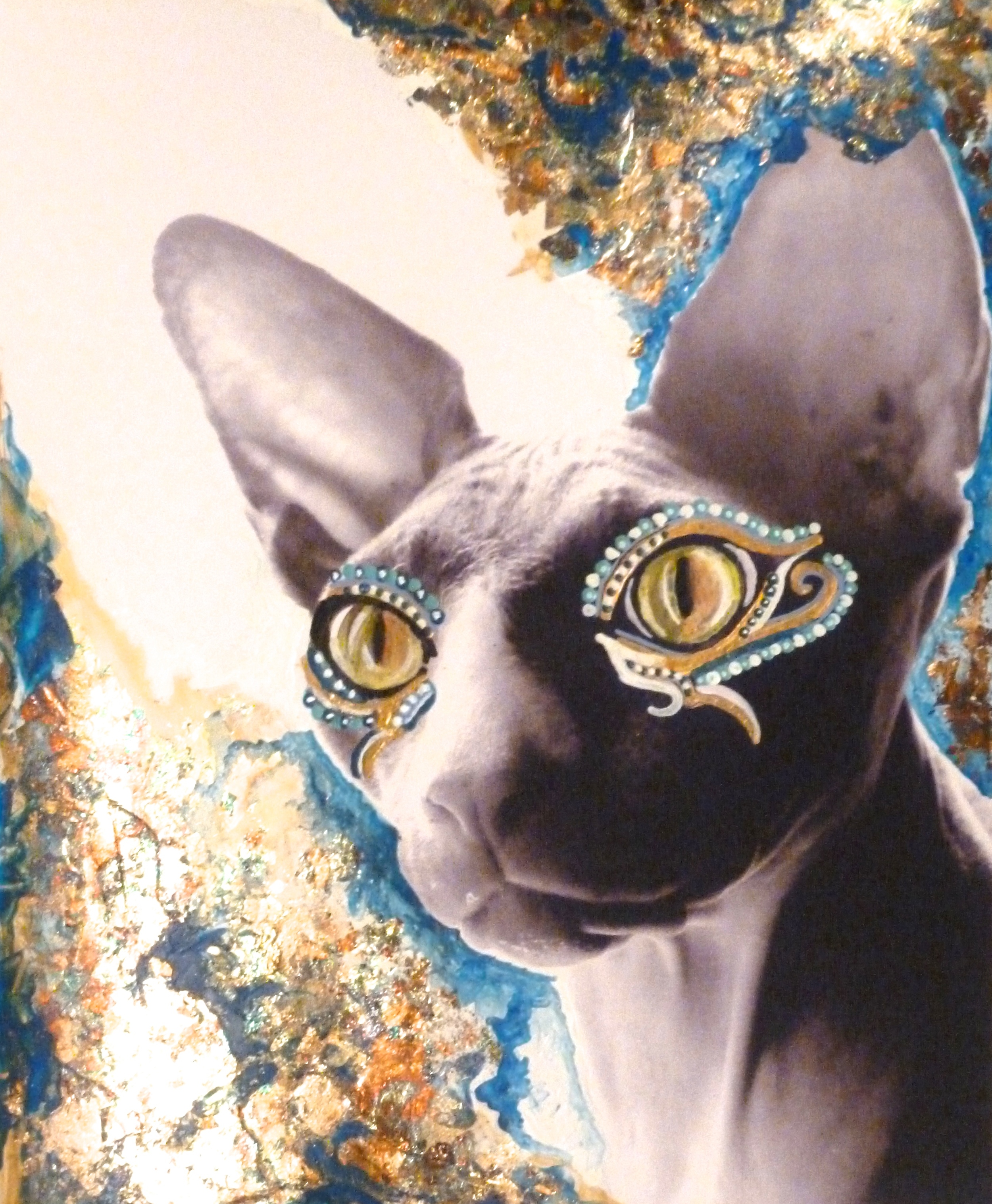SphYnx as a Sphinx
"For the cat is cryptic, and close to strange things which men cannot see. He is the soul of antique Aegyptus, and bearer of tales from forgotten cities..." ~ H.P. Lovecraft
Sphynx as a Sphinx is a series, which offers insight into a world of ancient symbolism. Praised for controlling vermin, the domesticated cat became a symbol of grace and poise and was considered sacred in ancient Egyptian society. In addition to this high praise, the Egyptians developed a cat-centered religion. The “Cult of the Cat” gathered a large following in a region known as Bubastis. The chief center of worship revolved around the goddess Bastet, whose features resembled that of a feline and represented protection, fertility, and motherhood.
Cats are revered animals and they proved to be vital in Egyptian society and religion. The featured subject of my work revolves around a small hairless sphynx cat named Uncle Fester. Due to their unique and distinctive physical characteristics, the Sphynx cat (though spelled differently) garners its name from the ancient Great Sphinx of Giza. Their prominent cheekbones, elongated limbs, svelte build and wide set eyes give them a regal appearance, which brings to mind Egyptian cats of ancient lore.
I chose to focus on the physicality of the animal, while incorporating Egyptian symbolism and themes. Altering the images with gold leaf and Egyptian icons pay homage to the regal and ancient past while also alluding to present day. In addition, encaustic painting was utilized to connect further with ancient Egyptian artistic media. The historic use of this hot wax painting technique can be traced back to Egyptian mummy portraits from approximately 100–300 AD. The work is meant to emphasize the use of the cat in Egyptian society as a ubiquitous form of visual symbolism. These animals garnered much popularity and became synonymous with sacred practices. My series depicts Uncle Fester as a representation of the fascinating creatures of ancient times long gone.

